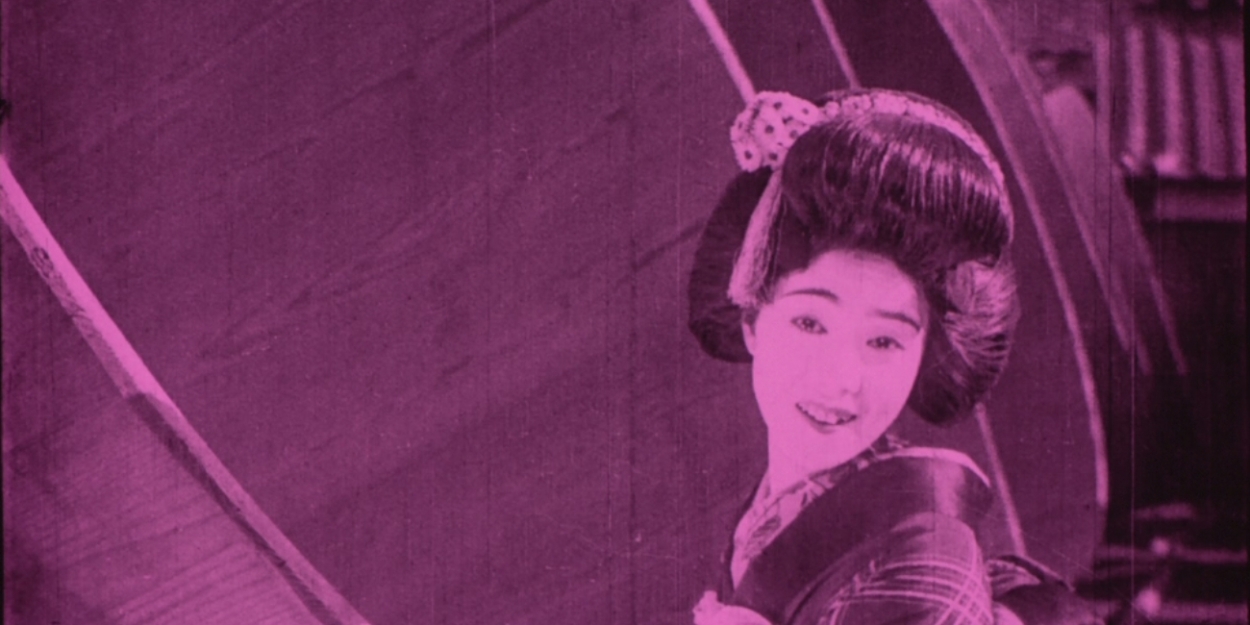Japan Society Will Host 'The Benshi Tradition and The Silver Screen: A Japanese Puppetry Spin-Off'
Both screenings will be preceded by a lecture on benshi, led by Dr. Junko Yamazaki, Assistant Professor of Japanese Media Studies at Princeton University.

Japan Society will present a two-program event of classic silent samurai films enlivened by live benshi narration and shamisen performance with The Benshi Tradition and the Silver Screen: A Japanese Puppetry Spin-Off, performed by modernbenshi star Ichiro Kataoka and master shamisen musician Sumie Kaneko. The Benshi Tradition and the Silver Screen will have two events only, featuring screenings of Japanese silent film rarely seen outside of Japan: A Diary of Chuji’s Travels (1927) on December 12 and Chushingura (1910) on December 13, taking place at Japan Society (333 East 47th Street). This marks the culminating event in the Fall 2024 Series “Ningyo! A Parade of Puppetry”
Japan’s silent film era (1896 – 1939) was defined by one of its most distinctive and culturally unique elements: the benshi, or silent film narrators. These riveting “movie talkers” were a major attraction for early cinema fans in Japan, drawing in audiences with their live film narration and dramatic character portrayals, ranging from young high-pitched children to deep husky brutes. This rich period of early Japanese cinemashares a direct structural connection with the tradition of Japanese puppet theater, in which chanters narrated stories and gave voice to silent puppets alongside theatrical shamisen music. Bridging the gap between 19th century Japanese theater and early silent motion pictures, several of the earliestbenshi came directly from kabuki or Japanese puppet theater traditions themselves and were often accompanied during film screenings by live performance from traditional Japanese instruments such as shamisen, fue (flute), taiko drums and other percussion. In this two-night program, modern benshi star Ichiro Kataoka and New-York-based master shamisen player Sumie Kaneko come together for screenings of two stories set in the samurai era – one of which (Chushingura) was originally dramatized onstage as a bunraku puppet play in the early 18th century.
Both screenings will be preceded by a lecture on benshi, led by Dr. Junko Yamazaki, Assistant Professor of Japanese Media Studies at Princeton University, beginning at 6:30pm.
About the films:
Thursday, December 12 at 7:30pm: A Diary of Chuji’s Travels (1927) – One of the great masterworks of Japanese silent cinema, Daisuke Ito’s A Diary of Chuji’s Travels exists in incomplete form – a triptych missing its first segment with remnants of its second and third parts – yet stands out as a seminal jidaigeki (period drama), voted the greatest Japanese film of all time in a 1959 Kinema Junpo poll. Starring Ito’s frequent collaborator Denjiro Okochi, another great star of the silent era known for his portrayal of Sazen Tange, A Diary of Chuji’s Travels recounts the exploits of Chuji Kunisada (Okochi), the outlaw bakuto (gambler) – a real-life proto-yakuza figure who took on a romanticized Robin Hood reputation. A fragmented version of its once four-hour long runtime, A Diary of Chuji’s Travels is a kinetic dispersal of rapid-cut swordplay sequences, fluid camerawork (Ito was nicknamed Ido daisuki, a pun on his name meaning “big fan of dynamic camera movements”), expressionist techniques and political commentary – an embodiment of the modernized period drama that both Ito, the “father of jidaigeki,” and Okochi helped pioneer.
Black and white silent film (DCP) with live benshi narration, live shamisen accompaniment, and English subtitles. Film running time is 111 minutes.
Friday, December 13 at 7:30pm: Chushingura (1910-1917) – One of the representative works of Shozo Makino, the “father of Japanese Film,” and Matsunosuke Onoe, Japan’s first movie star, Chushingura adapts the classic tale of the 47 ronin who enact vengeance following the unjust death of their master, based on true events. Makino, once the theater manager for Kyoto’s Senboza Theater, was said to have discovered Matsunosuke, a regional kabuki troupe leader known for his stage tricks. Rather than simply adapting the complicated narratives of kabuki and bunraku plays, Makino would meld them with choreographed swordplay and heroic tales, becoming a pioneer of the kyugeki (old theater) – a classical period drama that would precede the now better-known jidaigeki (period drama). The film is a patchwork of sorts – a continual “work-in-progress” – wherein newerChushingura films starring Matsunosuke would include scenes from the previous releases, evolving with every release. This presentation primarily includes scenes from the 1910 production (said to be the first full-length version of the story in Japanese cinema), a print of Jitsuroku Chushingura held by Matsuda Film Productions, and a tinted 35mm print discovered by benshi Ichiro Kataoka in Kyoto.
Black and white silent film (DCP) with live benshi narration, live shamisen accompaniment, and English subtitles. Film running time is 90 minutes.
The screening materials for this event are provided by the National Film Archive of Japan.
Comments
Videos

